I wasn’t sure what I would write today. I always have ideas and photos in the back of my mind, but when I rode my bike past this collection of tulips on my way to volunteering at the food pantry, I knew it had to be tulips.
After all, it is tulip time.
I’ve grown up with tulips—they are one of my mother’s favorite flowers. But it wasn’t until I wrote a book about them a few years back that I learned just how many types of tulips there are. There are tulips that look like peonies, there are tulips that look frosted with ice crystals, there are tulips so tiny you would not think they were tulips at all.
And today, as I rode down a street I had never ridden down before, I found almost all of them in a single suburban flower bed; I felt like I had hit the jackpot.
It might not look amazing from here, but wait until we get closer.
Did I mention the ones that look like peonies? Meet the Double tulips. They come in early and late blooming version. (I can’t be positive, but I think this is Copper Image).
The wildest and weirdest tulips around are the Parrot tulips, with petals that look mutated and melting (see the pink below?). Mutations in plant genetics do occur naturally, but these modern parrots are the result of deliberate experimentation with radiation in the 1970s (wild that they thought it was something to play around with!). My favorite parrots are Professor Rontgen, Apricot Parrot, and Estella Rijnveld.
I’m pretty sure this is Silver Parrot (called that even though it is pink).
And this shot (below) excited me far more than probably anyone else. Those white tulips below are the Lily-flowered form, with the petals swooping out like that. They’re not very popular in the US these days, but they were the favored tulip form in Turkey in the period called the Tulip Age (early 1700s).
These days many people associate tulips with the Netherlands, but they originate high in the mountains of Central Asia. They were carried along the SIlk Road route, to Persia and to Turkey, beloved in both places. In Istanbul, men would tuck tulip blooms into their turbans and they were made the official court flower.
But this is one of my favorite details:
During tulip bloom time, the imperial palace hosted a party that went on for several nights, held in gardens lit by lanterns and decorated with hundreds of vases of tulips and singing birds in cages. Even the guests were asked to dress in colors that coordinated with the flowers. Can you imagine how beautiful that must have been?
Every time I see a lily-flowered tulip, I marvel that this bloom, revered and celebrated in royal courts, has ended up—years later—on the other side of the world, edging a suburban driveway. That is horticultural history, growing right over there.
The other surprising flower here is actually the tiny ones on the left. These are one of the species tulips—the original, wild form of the flower (this one is Tulipa clusiana Lady Jane, I’m pretty sure, but could also be Peppermint Stick). On sunny days the petals will open almost flat. It’s amazing to think that every other tulip that exists was bred from small and simple blooms like this.
Finally, the fringed tulips! These flowers have a deeply serrated edge that makes it look like they are frosted. They come in the simple, six-petal flowers and these outrageous double blooms.
I mean, just look at this lovely madness.
There are a few other tulips forms, but these residents did such a good job of covering almost all the bases (especially in an area where squirrels like to dig up bulbs). I loved seeing all this variety in a single yard. What a reminder of the beauty and the many hands that have tended and created it for generations and across continents.
What about you? What sort of delight have you come across lately?
I hope you had a good weekend. The world is a wild and wooly place right now, let’s go after some of that good to keep us grounded.
—Tara
Something else to enjoy: my books:

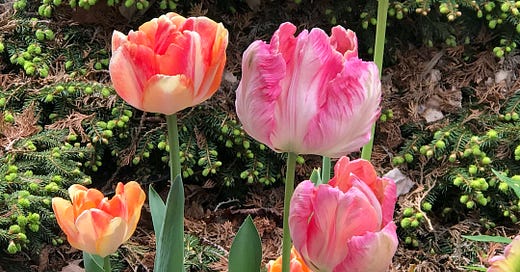


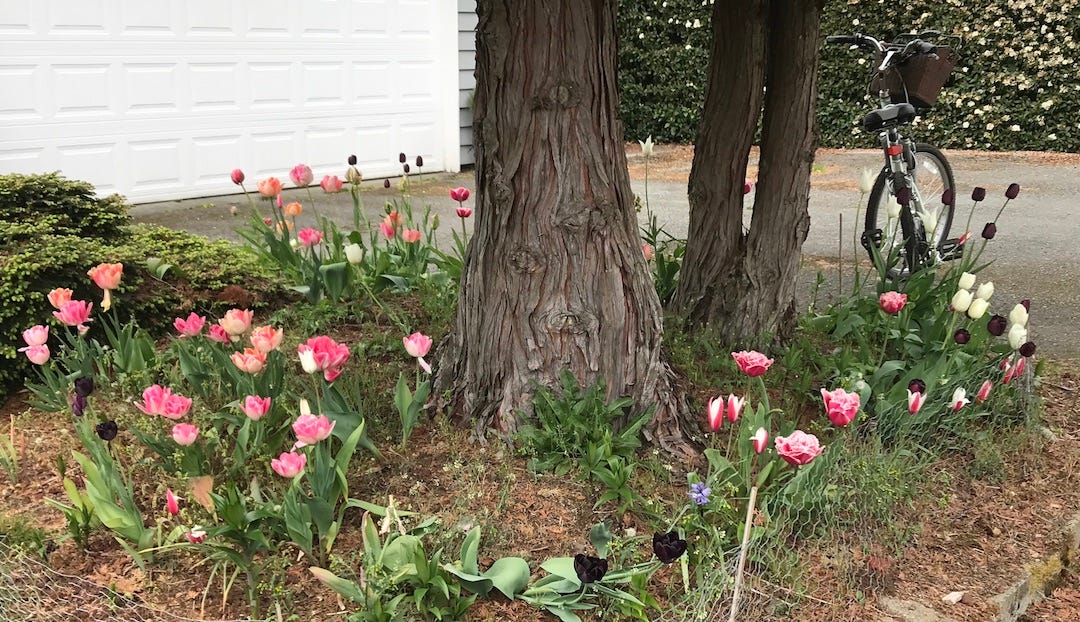
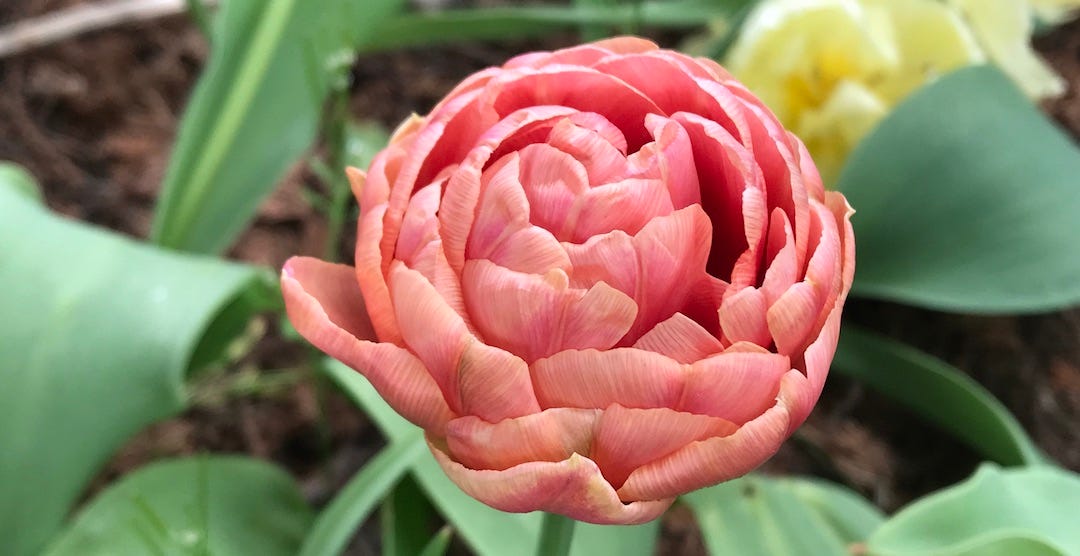

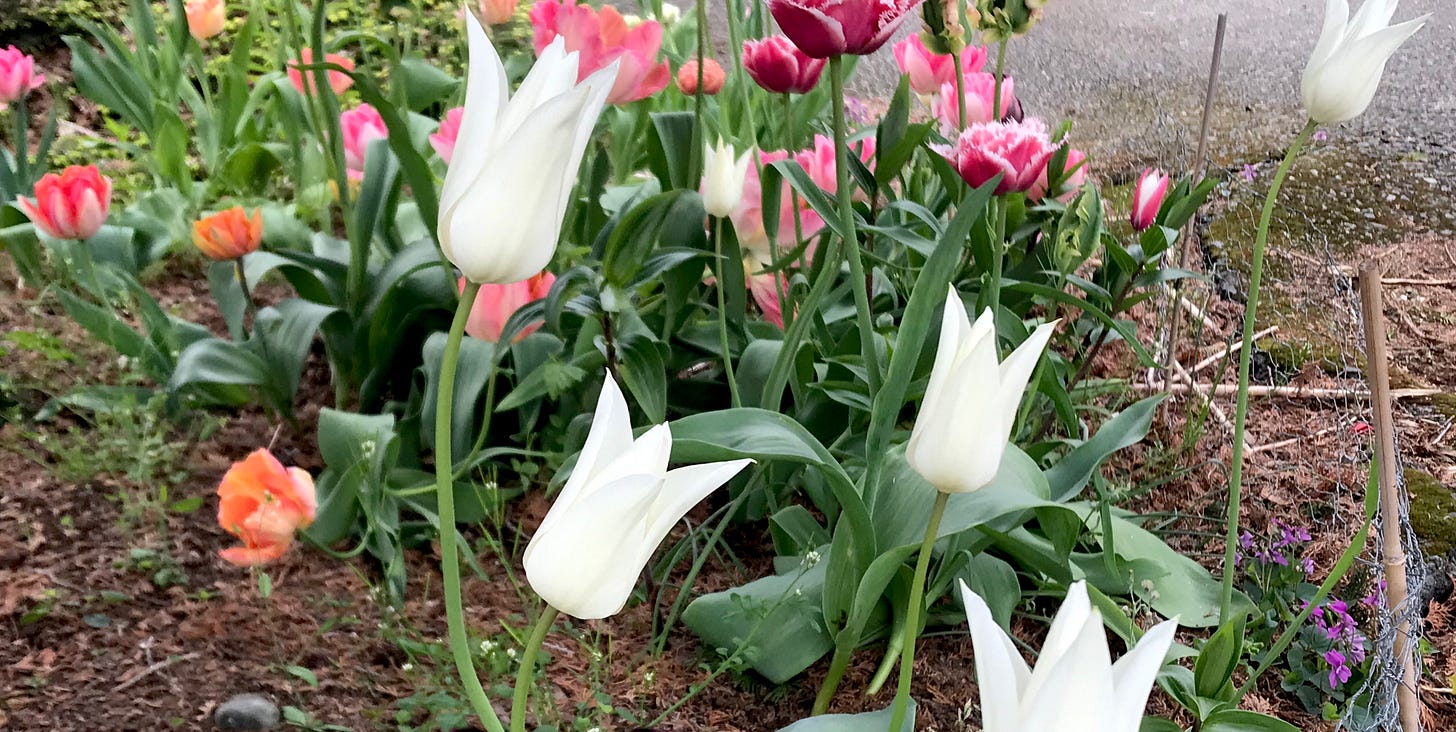
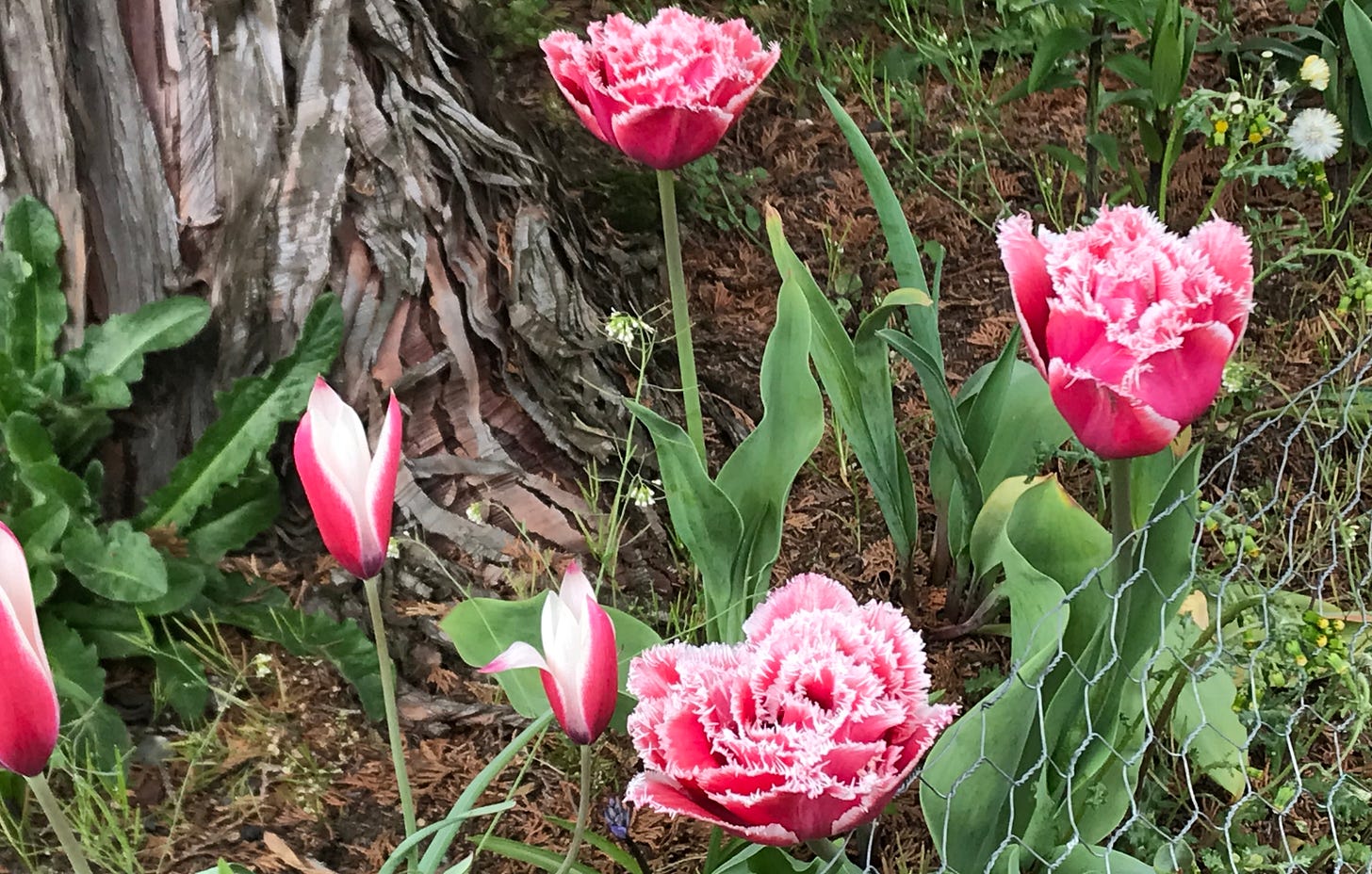
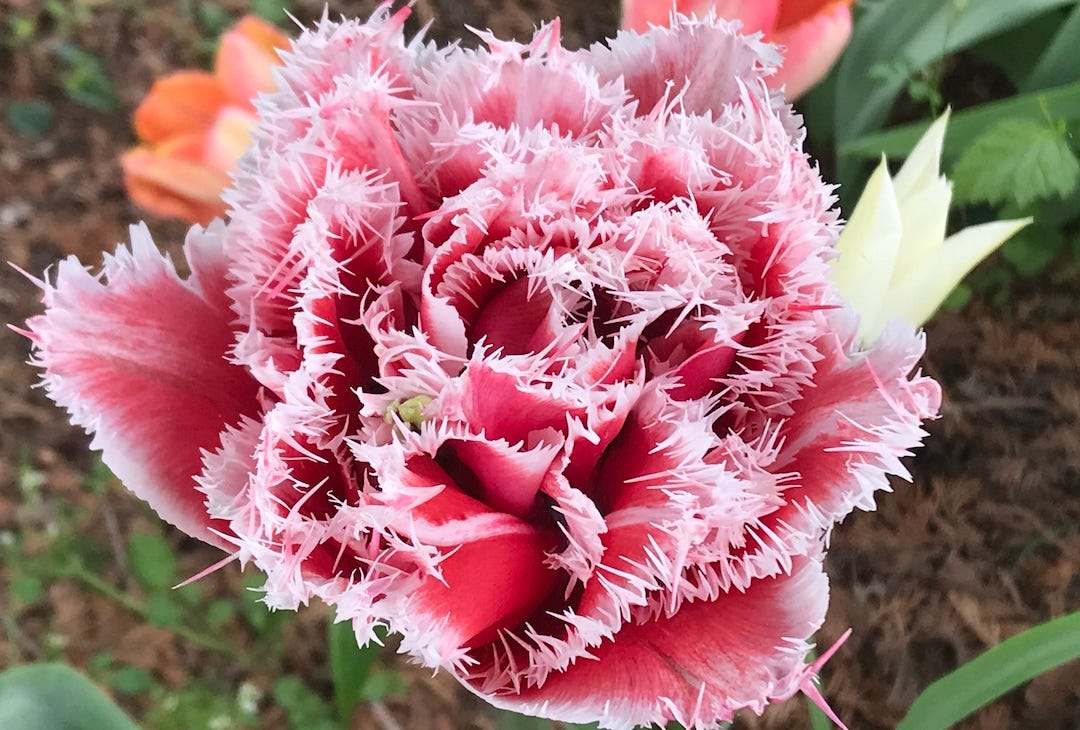

On Saturday I went to Armstrong Redwoods State Natural Reserve and visited a redwood tree which is approximately 1,400 years old. Whenever I’ve made lists of my favorite things on earth, redwood trees are always on the lists.
I had some small pink and green tulips that died off or maybe got consumed somehow. I’ve always been fascinated by a 1920s quilt pattern of red tulips. Even if I never end up planting a big bed of them, I’d like to make this quilt. One of my favorite red-pink nail polish colors is called Dutch Tulips, and I will have it on my toes at some point this summer! But I love most tulips, and you showed me some amazing ones!